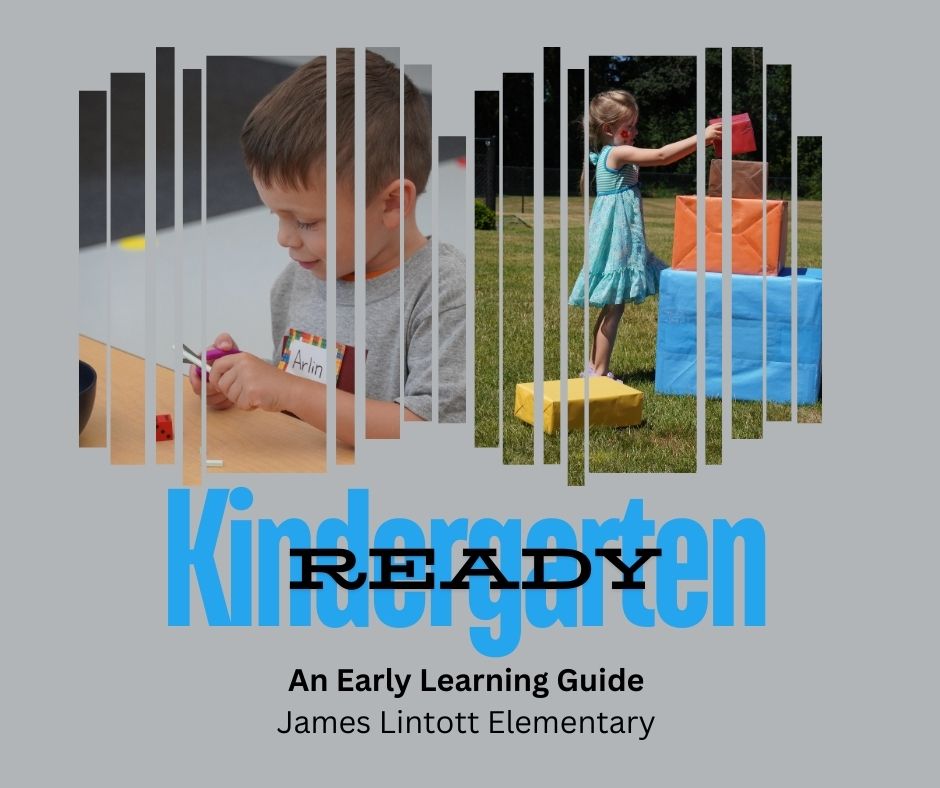What does it mean to be “Kindergarten Ready?”
Kindergarten readiness means children have the appropriate social, academic, and behavioral skills for success at school. It takes family, school, and community to create a safe, supportive, and caring environment for learning. Lintott Elementary takes pride in creating a warm, friendly environment where the success of students is a priority. The guide below gives a list of social, academic, and behavioral skills to help your child be better prepared for the start of kindergarten. This is in no way a test – simply a guide for preparation.
Self-care skills
I can:
- Take care of personal needs. For example, handwashing, clothing, and bathroom needs
- Express my own needs. For example, “I’m hungry,” or “I’m sick”
- Say my first and last names, and age.
- Ask questions about the world around me.
Physical Development (fine and gross motor skills)
I can:
- Grip my pencil correctly (with a 3 point grip).
- Hold scissors correctly to cut simple objects.
- Put on a coat, and unzip my backpack and lunchbox – maybe with some adult support.
- Make a variety of lines and shapes.
- Jump with my feet together.
- Bounce a ball and catch it.
- Climb stairs.
Social & Emotional Development
I can:
- Share and take turns with others.
- Be separated from my caregiver without getting upset.
- Express basic emotions. For example, happy, mad, scared
- Work and play with my classmates.
- Identify similarities and differences in myself and others.
- Follow basic safety rules and routines.
- Solve small problems and start identifying ways to solve those problems and come up with solutions (may take multiple attempts, may ask adult for help).
- Do and enjoy pretend play. For example, talking on pretend phone, playing in a play kitchen, driving trucks
Language concepts
I can:
- Take turns in conversations with others.
- Follow a two-step direction. For example, “Please hang up your backpack and take off your coat”
- Speak a sentence using 5 or 6 words.
- Understand many words for different objects and can describe them.
- Use a picture to tell a detailed story.
Literary concepts
I can:
- Identify if two words rhyme. For example, cat and hat
- Write some letters correctly, especially those in my own name.
- Identify many letters in the alphabet and the sounds letters make.
- Listen and stay engaged in a story being read.
- Hold a book correctly and turn pages one at a time.
- Retell a story from my favorite book or own personal story.
- Identify the beginning sound in a word. For example, bat begins with “B”
- Write my first name, starting with a capital at the beginning and the rest lowercase letters.
Math concepts
I can:
- Count objects using one number for each object.
- Identify and write numbers 0 to 10.
- Count from 0 to 20 in order aloud.
- Recognize four objects in a group without counting.
- Recognize basic 2-dimensional shapes. For example, circle, square, triangle, rectangle
- Understand positional words. For example, above, below, behind
- sort objects by color, shape, or size.
Cognitive Development
I can:
- Complete a task. For example, puzzle, builds with Legos
- Engage in memory games. For example, matching games with cards
- Focus and pay attention during different activities. For example, story time, center work time
- Sing songs and recite nursery thymes.
- Adapt to new situations.
- Identify and name the basic colors.





